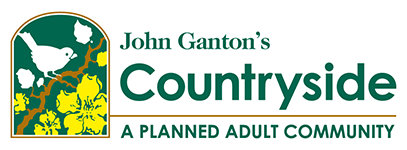
For many seniors, the suggestion that they move to a senior living community may be an unwelcome one. They may equate a senior living community with the “nursing homes” of their childhood, or feel their family is just trying to get rid of them.
In most cases, however, adult children see it differently, more as a move for the senior’s own safety, health and independence. When the two are at odds, it’s time to look at ways to bridge the gap. Here are steps adult children can take to help bring their loved one to a better understanding of today’s senior living and why they should make the move.
Define pain points:
Seniors who still live at home are at risk of a range of health and safety dangers from falls, to poor diets, to missed medication doses, to the inability to maintain good personal hygiene. Even seniors with caregivers are often alone for long stretches of time and may feel isolated and lonely. As family’s move toward the notion of moving to a senior community, it’s a good idea to keep a log of problems that have arisen so that they can use these pain points to explain why senior living can help minimize or eliminate each of them. When adult children pinpoint the need to move based on facts, it shows the senior that their family only wants what’s best for them. For more about assessing a senior’s need to move to a senior community, read our blog, “Signs It's Time for Assisted Living.”
Be empathetic, not sympathetic:
Seniors are adults and should be treated as such so they feel they are in control. Condescending or talking to them like children will only bring on more resistance at a time when cooperation is key. Instead, approach them with respect and share with them why you feel a move to senior living is for their well-being and happiness. One of the best ways to do that correctly is be empathetic — walk in their shoes — and imagine how you would feel (or will feel) if the table were turned. Empathy, not to be confused with sympathy, shows others how much you understand and want to help. More about how to put empathy front and center can be found in the Psychology Today article, “How to Communicate Effectively With Older Adults.”1
Tell the truth:
For many adult children, the need for a senior’s health and safety is combined with the sometimes negative impacts of caregiving on the caregiver. When this is the case, it’s best to be truthful and explain the reasons.
For example, work may suddenly require more hours or travel, a caregiver’s health may become an issue, family care and responsibilities are piling up, etc. This is not to make a senior feel guilty, but rather to share with them the realities of life. It’s also a great opportunity to suggest a trial run in respite care, which not only provides a caregiver with a needed break, but can show a senior how really great a senior community can be. Our blog, “When Respite Care is the Perfect Solution,” explains how respite care works.
Explain how senior living communities have changed:
For many seniors, the term “senior living” equates to memories of where a grandparent lived 50 or more years ago. But things have changed dramatically since then! Adult children should do their best to dispel old memories by explaining how senior living communities have changed and become places where privacy and independence are valued and encouraged, fun is the name of the game, and help is always available. By talking about amenities like pools and theaters, off-campus trips for shopping and entertainment, and on-site offerings like exercise rooms, crafts, games, and classes, many seniors will soon understand how much they have to gain by making the move to senior living. Our blog, “Assisted Living: It’s All About the Living” is a great introduction for family members and seniors who want to know more.
Take a tour:
When resistance still exists, seeing is believing and taking a senior on a tour is a great way to show them the new reality of senior living. Start out with a list of senior living communities in the desired location and spend time online with the senior looking at photos, reading brochures and taking virtual tours when available. As you proceed make note of communities the senior prefers and schedule live tours as soon as possible. It might also help to include other family members who can bring additional their enthusiasm and support. Also take along a list questions to ask that address the senior’s own concerns, as well as the family’s, so you come away with answers. A Right Place for Seniors offers a great list to begin with in their blog, “20 Questions to Ask Retirement Communities.”
At Ganton’s Countryside we love to show seniors and their families all of the great ways our residents enjoy their lives in a safe, secure and comfortable community. Learn more about what we have to offer by contacting Margaret Nagel at (517) 206-5000 or download our brochure to learn about our care levels, cost, and amenities.

